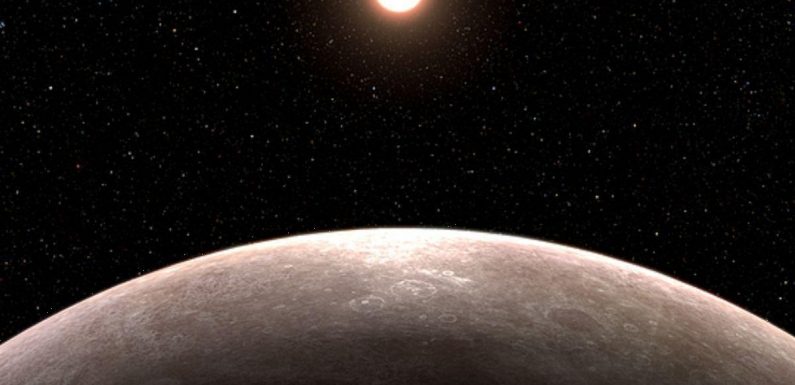
NASA preparing for a long-term presence on the Moon
We use your sign-up to provide content in ways you’ve consented to and to improve our understanding of you. This may include adverts from us and 3rd parties based on our understanding. You can unsubscribe at any time. More info
NASA’s James Webb Telescope (JWT) has made a spectacular breakthrough discovery after snapping images of a rocky planet with conditions that are fairly similar to Earth. The exoplanet (a planet outside our Solar System) has been given the name LHS 475 b and its 99 percent of Earth’s diameter. Scientists have been unable to determine whether it has an atmosphere but found that it lacks a thick methane-dominated atmosphere like Saturn’s moon Titan has.

While the planet has similar conditions to Earth, it is a few hundred degrees warmer and completes an orbit in two days.
Mark Clampin, Astrophysics Division director at NASA Headquarters in Washington, said in a statement: “These first observational results from an Earth-size, rocky planet open the door to many future possibilities for studying rocky planet atmospheres with Webb.
“Webb is bringing us closer and closer to a new understanding of Earth-like worlds outside our solar system, and the mission is only just getting started.”
The research team that discovered the planet was led by Kevin Stevenson and Jacob Lustig-Yaeger, both from the Johns Hopkins University Applied Physics Laboratory.
Mr Lustig-Yaeger said in a press release: “There is no question that the planet is there. Webb’s pristine data validate it.”
The team decided to keep watch of the planet with the JWT after carefully assessing targets of interest from NASA’s Transiting Exoplanet Survey Satellite (TESS), which picked up signs that the planet might exist. The JWT’s Near-Infrared Spectrograph (NIRSpec) reportedly snapped an image of the planet with ease and with clarity despite making only
Mr Stevenson said: “The fact that it is also a small, rocky planet is impressive for the observatory”
And while it is possible that rocky world has no atmosphere, there are some atmospheric compositions that are yet to be ruled out. This includes a pure carbon dioxide atmosphere, for instance.
Mr Lustig-Yaeger said: “Counterintuitively, a 100 percent carbon dioxide atmosphere is so much more compact that it becomes very challenging to detect.”
The team will need to get even more precise measurements to tell whether there is a pure carbon dioxide atmosphere or no atmosphere whatsoever. The researchers are set to make some additional observations this summer to find out more.
And as the planet is just a few hundred degrees hotter than Earth, the researchers say it could end up looking more like Venus if they manage to detect clouds. This is because Venus, has a carbon dioxide atmosphere and is surrounded by thick clouds.
Mr Lustig-Yaeger added: “We’re at the forefront of studying small, rocky exoplanets.We have barely begun scratching the surface of what their atmospheres might be like.”
We’ll be bringing you the very latest updates, pictures and video on this breaking news story.
For the latest news and breaking news visit: /news
Stay up to date with all the big headlines, pictures, analysis, opinion and video on the stories that matter to you.
Follow our social media accounts here on facebook.com/DailyExpress and @Daily_Express
Source: Read Full Article